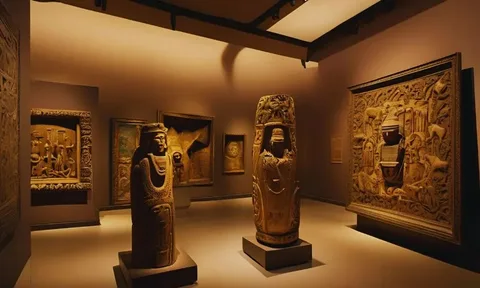
Prehistoric cave art representing early human expression – Lascaux, France
Ancient Artz stands as a testament to the earliest forms of creativity, craftsmanship, and cultural identity in human history. From the painted caves of France to the sculpted temples of India, ancient art not only records the beliefs and values of early civilizations but also shows how visual storytelling evolved across regions and ages.
Understanding Ancient Artz
Ancient Artz refers to artistic works created by early human societies, often dating back to thousands of years before the Common Era. These artworks include cave paintings, pottery, sculptures, carvings, and architecture—each reflecting spiritual, societal, or practical aspects of ancient life.
One of the most prominent resources that provides an in-depth historical perspective is Wikipedia’s Ancient Art page, which catalogs global ancient art movements with scholarly references.

Key Civilizations That Shaped Ancient Artz
1. Mesopotamian Art
Often known as the cradle of civilization, Mesopotamia produced detailed sculptures, cylinder seals, and architectural wonders like ziggurats. These art forms were closely tied to religion and kingship.
2. Egyptian Art
Egyptian art focused on life after death and divine order. With wall reliefs, pyramids, and symbolic motifs, Egyptian artists followed strict conventions to preserve continuity over millennia.
3. Indus Valley Civilization
The Indus people contributed seal carvings, terracotta figurines, and intricate jewelry. Their art reflected urban sophistication and trade networks, though their script remains undeciphered.
4. Greek Art
Greek ancient art combined realism and idealism. Pottery, sculptures, and temples like the Parthenon celebrated human form, mythology, and civic pride.
5. Chinese Ancient Art
China’s early dynasties created elaborate bronzes, jade carvings, and silk paintings. Art was deeply interwoven with philosophy, nature, and imperial legacy.
6. Pre-Columbian Art
Maya, Aztec, and Inca civilizations produced large-scale stone carvings, ritual masks, and painted codices. These works often conveyed complex cosmological beliefs.
Styles and Techniques in Ancient Artz
- Cave Paintings: Found in places like Lascaux (France) and Bhimbetka (India), these depicted hunting scenes, animals, and rituals using natural pigments.
- Pottery and Ceramics: Utilized for storage and storytelling, with decorative elements that reveal social and spiritual themes.
- Stone Sculpture: Ranged from small figurines like Venus of Willendorf to monumental statues such as Egypt’s Sphinx.
- Reliefs and Frescoes: Used to decorate walls and communicate power, divine favor, or mythological tales.
- Textile Art: Although rare to survive, ancient textiles offer insight into early weaving, dyeing, and symbolism.

Comparative styles in Ancient Artz from Egypt, Greece, and Mesopotamia
Why Ancient Artz Still Matters
Ancient Artz is not just relics of the past; it helps modern scholars understand migration, trade, belief systems, and technological progress. Many design principles seen in today’s architecture, textiles, and symbolism have roots in ancient creativity. Museums and archeological sites continue to preserve and decode these artifacts for future generations.
Preservation and Legacy
Organizations like UNESCO work to protect ancient art sites from destruction due to war, climate change, or looting. The academic community actively translates, restores, and digitally archives ancient artworks to prevent loss.
Contemporary Influence of Ancient Artz
Many modern artists, architects, and designers draw inspiration from ancient art forms. Whether it’s a Greek-style sculpture in a public park or a motif adapted from Aztec art in fashion, the legacy of Ancient Artz lives on globally.
Conclusion
The essence of Ancient Artz lies in its power to transcend time. These early visual expressions provide us with insight into human thought, worship, and society. They remain vital tools in understanding who we are and where we come from.
For more informative articles like this, visit Magazines Break.
FAQs about Ancient Artz
What is Ancient Artz?
Ancient Artz refers to the visual and material artworks created by early civilizations, including cave paintings, sculptures, pottery, and architecture.
Why is Ancient Artz important?
It offers insights into early human beliefs, societies, and technological capabilities, helping historians trace cultural development.
Which civilization created the first art?
The oldest known artworks come from prehistoric times, with cave paintings in Europe and Africa dating back over 40,000 years.
What materials were used in ancient art?
Common materials included stone, clay, metal, pigments from nature, and textiles.
Where can I see Ancient Artz today?
Museums like The Louvre, The British Museum, and sites such as the Pyramids or Stonehenge display or preserve ancient art.
What is the difference between ancient and classical art?
Ancient art refers broadly to early human works, while classical art is often tied to Greece and Rome’s refined, idealized styles.
What themes were common in ancient art?
Religion, mythology, nature, afterlife, rulers, and daily life were central themes.
Are there written records with ancient art?
Yes, some artworks include inscriptions or are part of manuscripts that help interpret their meaning.
How has Ancient Artz influenced modern art?
Modern artists often revisit ancient motifs, techniques, and philosophies to inform contemporary design and storytelling.
Can I study Ancient Artz academically?
Yes, many universities offer archaeology, art history, and anthropology programs focused on ancient art.




